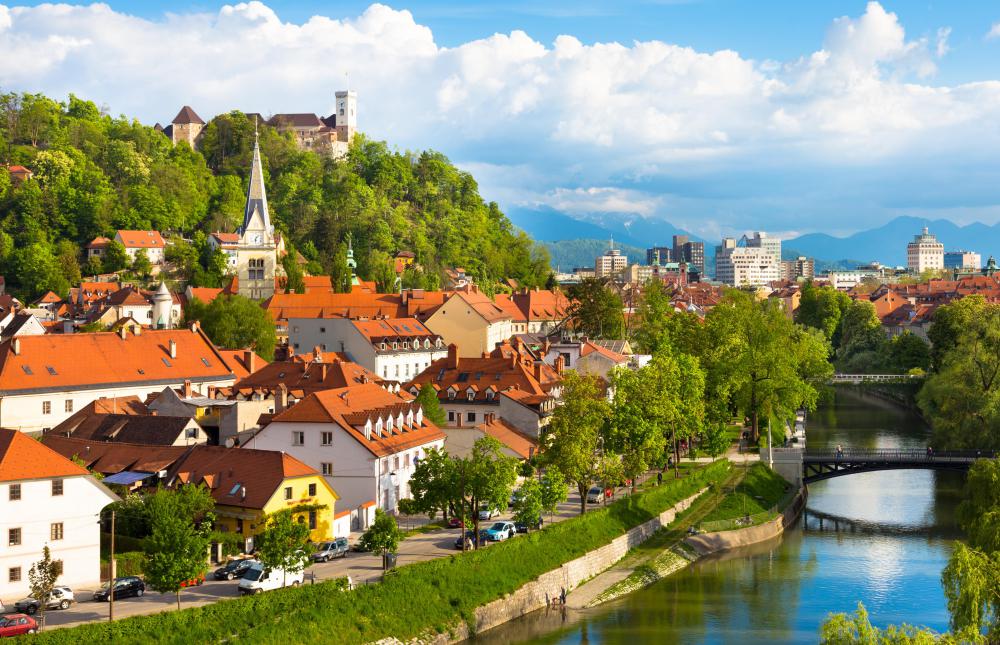At WiseGEEK, we're committed to delivering accurate, trustworthy information. Our expert-authored content is rigorously fact-checked and sourced from credible authorities. Discover how we uphold the highest standards in providing you with reliable knowledge.
What Should I Know About Slovenia?
Slovenia is a medium-sized country in Central Europe. It covers 7,800 square miles (20,300 sq. km), making it just a bit smaller than the state of New Jersey. It borders Austria, Croatia, Hungary, and Italy, and has coastline along the Adriatic Sea.
The land that is now Slovenia was once inhabited predominantly by the Illyrians and the Celts, before the 1st century AD. At that time the Roman Empire, after a long military campaign, finally claimed the land as its own, splitting it among a number of Roman provinces.

After the fall of the Roman Empire various parts of modern-day Slovenia went their own ways. A large section became part of Samo’s Tribal Union, eventually becoming an independent duchy, and later joining the Frankish Kingdom. The Slovenes were in charge of their own destiny for a time, but by the 9th century began to be ruled by foreigners. Parts of the land were under some degree of control of the Bavarians and the Venetians.

Beginning in the 14th century parts of what is now Slovenia were controlled by the Habsburgs, who ruled the lands until the end of World War I. Even with this Germanic influence, the Slovenes retained their own culture and language quite fiercely. This continuation of their culture fueled later nationalist sentiment, leading to a great deal of autonomy under their Habsburg rulers.
The Slovenes joined with the Croats and the Serbs after World War I to form a collective state, eventually renamed Yugoslavia in 1929. Despite a brief period when Yugoslavia was controlled by the Axis Powers during World War II, Yugoslavia continued as a unified nation through the 1980s.
As Communism weakened throughout Eastern Europe at the end of the 1980s, the spirit of nationalism was inevitably reignited in Slovenia. Following an effective power grab by Serbia in 1989, the situation began moving to a head. In 1990 Slovenians voted for independence overwhelmingly, and it was declared in 1991. Initially this was met with resistance from the Yugoslavian government, but after Slovenia demonstrated its willingness and capacity to defend itself in the 10 Day War, its independence was eventually recognized.
Unlike many of its neighbors in Eastern Europe, Slovenia has had a relatively easy time integrating with the collectivist organizations of Western Europe. Slovenia is a member of both NATO and the European Union, helping it to become more economically stable and open to more widespread tourism and trade.
Slovenia is one of the more affordable destinations in Western Europe, and although no longer unknown by tourists, it is nonetheless much quieter and less crowded than many nearby countries to the west. Beaches are sprinkled along the nation’s coastline on the Adriatic, offering great outdoor experiences for part of the year. The Skocjan Caves are also a world-famous destination, and a UNESCO World Heritage Site, offering the fairly unique opportunity to walk over a dizzyingly deep chasm on little more than a rickety footbridge. The Julian Alps also make a wonderful trip, offering scenic views and remarkable skiing.
You can reach Slovenia by plane via most major European cities, and both buses and trains make regular connections to the capital of Ljubljana.
AS FEATURED ON:
AS FEATURED ON:












Discuss this Article
Post your comments